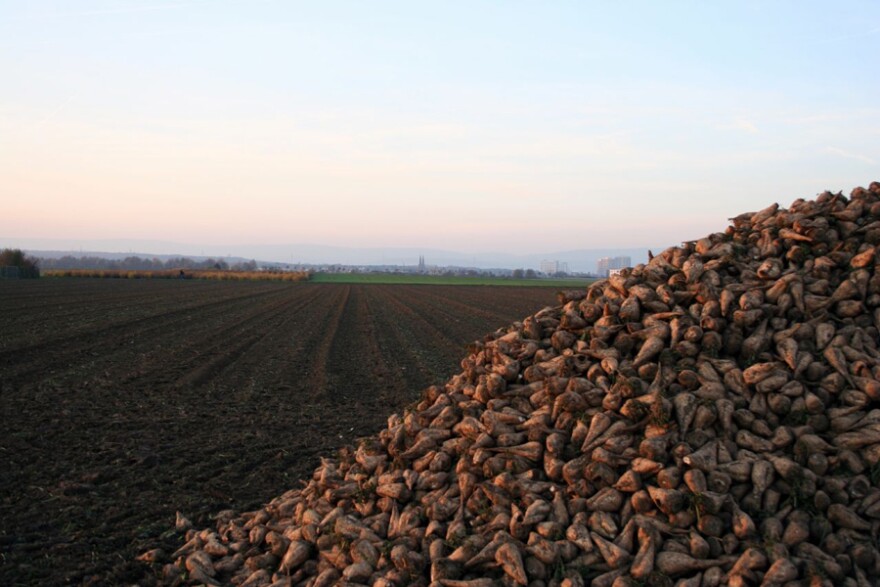There’s more sugar in the United States right now than we know what to do with, a fact that’s concerning to both sugar growers and the processors that use sugar by the truckload, like candy companies and large-scale bakeries.
Though the drought that plagued most of the country last year devastated many farmers, it ended up providing sugar farmers with record sugar yields and, subsequently, a sugar surplus nationwide.Sugar beets came in with such volume processors were unsure whether they’d be able to keep with up processing. The same was true with sugar cane growers.
With sugar piled up from last year, and cheaper sugar being imported from Mexico, sugar farmers are expecting to bring in a lot less money at harvest time this year. The price of sugar has fallen close to 40 percent in the past year and farmers are watching those numbers -- the most recent planting report from the USDA shows farmers planting about 20,000 fewer acres of sugar beets this year. (The data is not in yet on cane crops.)
"The prices go up and down, and unfortunately they're in the down cycle right now. The biggest concern is the water."
To bring sugar supplies back into balance and raise prices, the USDA recently presented a proposal to buy up about 400,000 tons of sugar. The surplus could result in the implementation of a never-been-used provision in the 2008 Farm Bill that created something called the Feedstock Flexibility Program.
Here’s how the program works: If it looks like sugar growers may default on government loans, the USDA steps in to buy the supplies and boost prices artificially, helping farmers but hurting processors. The government would then sell the excess sugar to ethanol producers at a loss.
In a March story on the sugar surplus, NPR reported, “U.S. sugar prices normally remain artificially high — sometimes twice the world price. (Last year, the price of sugar around the world averaged 26.5 cents per pound, compared with 43.4 cents in the U.S.) That hurts food companies and leads to higher prices at the grocery store.”
But the buy-up is not a done deal. The final decision ultimately comes down to agriculture secretary Tom Vilsack.
"At this time, the USDA has not made any determination on sugar surplus reduction, the methods to achieve it, or the disposition of the surplus,” USDA spokesman Brian Mabry said Friday.
Despite the low prices, uncertainty from federal officials and the persistent drought, farmers are still forging ahead with spring planting, weather permitting. Right now only 13 percent of the country’s sugar beet fields have been planted, compared to about 17 percent in a normal year.
Sugar beet farmers in Nebraska and Colorado, two states in the top ten for sugar beet production, face an even greater challenge this year. Sugar beets usually require irrigation and water supplies are still tight coming off last year’s drought. Recent snowfall across the plains has assuaged some of those fears, but the summer’s still not looking good.
“Any moisture, any time is welcome, but snowpack is still below average and if it gets hot and dry this summer, we’re not going to be in good shape,” said Mike Otto, an agriculturalist with the Western Sugar Cooperative, which includes farmers in Wyoming, Montana, Colorado and Nebraska.
Otto said farmers should be able to withstand the low prices for a while, thanks to higher prices in the past couple years and the record harvest last fall.
“The prices go up and down, and unfortunately they’re in the down cycle right now,” Otto said. “The biggest concern is the water.”
The next few months are key for growers who need to see lots of moisture for parched sugar beet fields in the West and will wait for the USDA to make a final decision on the sugar buy-up, which isn’t likely to happen until early summer.






